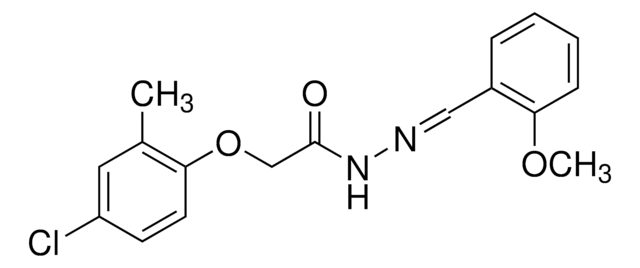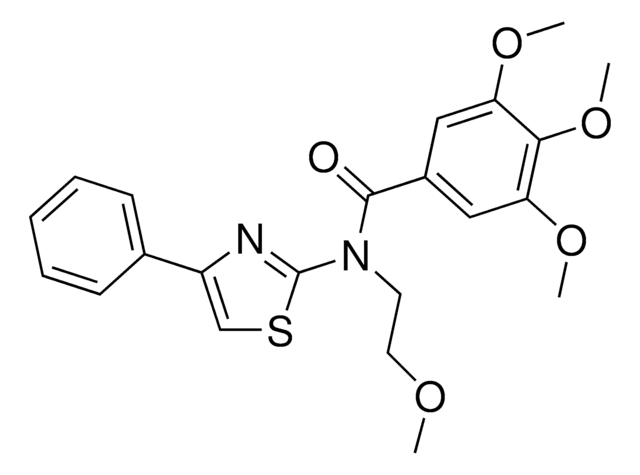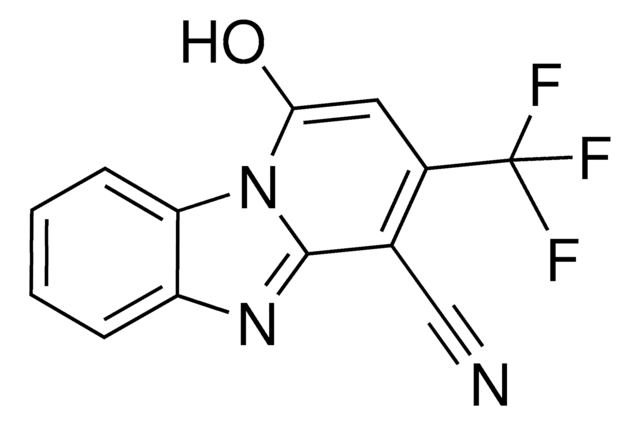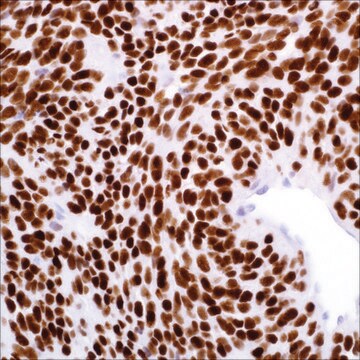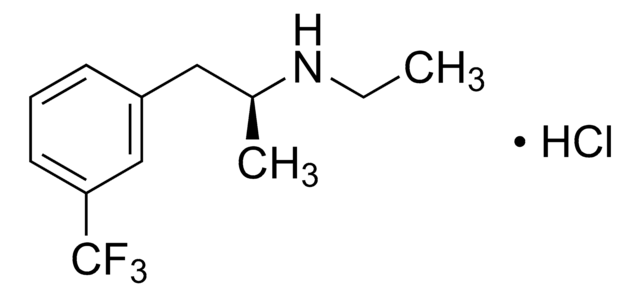SML0902
MONNA
≥98% (HPLC)
Sinónimos:
N-((4-Methoxy)-2-naphthyl)-5-nitroanthranilic acid
Iniciar sesiónpara Ver la Fijación de precios por contrato y de la organización
About This Item
Fórmula empírica (notación de Hill):
C18H14N2O5
Peso molecular:
338.31
UNSPSC Code:
12352200
NACRES:
NA.77
Productos recomendados
assay
≥98% (HPLC)
form
powder
color
light orange to dark orange
solubility
DMSO: 20 mg/mL, clear
storage temp.
2-8°C
Biochem/physiol Actions
MONNA (benzbromarone (Benzb) and N-((4-methoxy)-2-naphthyl)-5-nitroanthranilic acid) is a TMEM16A antagonists. It affects the liberation of sarcoplasmic reticulum (SR) calcium in human airway smooth muscle cells.
MONNA is a TMEM16A (ANO1) calcium-activated chloride channel blocker.
MONNA is a TMEM16A (ANO1) calcium-activated chloride channel blocker. MONNA blocks rhTMEM16A (ANO1) channel currents in HEK293 cells with and IC50 of 1.27 μM. The compound MONNA does not affect related human or mouse chloride channels bestrophin-1, CLC2 and CFTR at concentrations up to 10 μM.
signalword
Warning
hcodes
Hazard Classifications
Acute Tox. 4 Oral - Eye Irrit. 2 - Skin Irrit. 2 - STOT SE 3
target_organs
Respiratory system
Storage Class
11 - Combustible Solids
wgk_germany
WGK 3
flash_point_f
Not applicable
flash_point_c
Not applicable
Elija entre una de las versiones más recientes:
Certificados de análisis (COA)
Lot/Batch Number
¿No ve la versión correcta?
Si necesita una versión concreta, puede buscar un certificado específico por el número de lote.
¿Ya tiene este producto?
Encuentre la documentación para los productos que ha comprado recientemente en la Biblioteca de documentos.
Antagonists of the TMEM16A calcium-activated chloride channel modulate airway smooth muscle tone and intracellular calcium.
Danielsson J, et al.
Anesthesiology, 123(3), 569-581 (2015)
Quan-Fang Zhang et al.
Frontiers in plant science, 11, 145-145 (2020-03-13)
Ceramide sphingolipids are major components of membranes. C2 and C6 ceramides induce programmed cell death (PCD) in animals and plants, and we previously showed that C2 and C6 ceramides induce PCD in rice (Oryza sativa) protoplasts. However, the mechanistic link
Nuestro equipo de científicos tiene experiencia en todas las áreas de investigación: Ciencias de la vida, Ciencia de los materiales, Síntesis química, Cromatografía, Analítica y muchas otras.
Póngase en contacto con el Servicio técnico